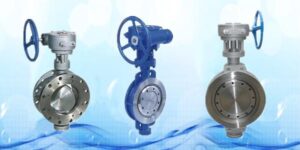Causes of internal leakage of ball valves
1) Causes of valve leakage during construction.

① transport and lifting improperly caused by the overall damage to the valve thus causing internal leakage of the valve.
② factory, after playing water pressure did not dry the valve and anti-corrosion treatment, resulting in sealing surface rust formation of internal leakage.
③ construction site protection is not in place, the valve is not installed at both ends of the blind, rain, sand and other impurities into the valve seat, resulting in leakage.
④ installation, no grease injection to the valve seat, resulting in impurities into the back of the valve seat, or welding burns caused by internal leakage.
⑤ valve is not installed in the fully open position, causing damage to the ball, in welding, if the valve is not in the fully open position, welding spatter will cause damage to the ball, when the ball with welding spatter in the switch will further cause damage to the seat, resulting in internal leakage.
(6) welding slag and other construction leftovers cause scratches on the sealing surface.
⑦ factory or installation time limit inaccurate position caused by leakage, if the valve stem drive sleeve or other accessories and its assembly angle misalignment, the valve will leak.
2) The causes of internal leakage of the valve during operation.
① the most common reason is that the operating manager does not maintain the valve considering the more expensive maintenance costs, or the lack of scientific valve management and maintenance approach to the valve does not carry out preventive maintenance, resulting in early failure of equipment.
② improper operation or failure to maintain in accordance with maintenance procedures resulting in internal leakage; ③ during normal operation, construction leftovers scratch the sealing surface, resulting in internal leakage.
④Inside leakage caused by damage to the sealing surface due to improper pipe cleaning.
⑤ Long-term non-maintenance or inactivity of the valve, causing the valve seat and ball to hold, resulting in sealing damage when switching the valve to form internal leakage.
⑥ valve switch is not in place to cause internal leakage, any ball valve regardless of the opening and closing position, generally tilted 2 ° ~ 3 ° may cause leakage.
⑦ many large diameter ball valves mostly have stem stop blocks, if used for a long time, due to rust and other reasons between the stem and stem stop blocks will accumulate rust, dust, paint and other debris, these debris will cause the valve can not rotate into place and cause leakage – if the valve is buried, lengthening the stem will produce and fall more rust and debris preventing the valve ball from rotating into place and causing the valve to leak.
⑧The general actuator also has a limit, and if rust is caused for a long time, hardened grease or loose limit bolts will make the limit inaccurate and cause internal leakage.
⑨ electric actuator valve position setting forward, not in place caused by internal leakage; ⑩ lack of periodic maintenance and maintenance, resulting in sealing grease dry, hard, dry sealing grease accumulation in the resilient valve seat after, obstructing the seat movement, resulting in sealing failure.
Natural gas ball valve internal leakage judgment method
Natural gas pipeline is commonly used in the fixed shaft ball valve, its general inspection method is: turn the valve to the fully open or fully closed position, through the valve body drainage nozzle emissions to check whether there is leakage. If it can be discharged cleanly, it proves that the seal is good. If there is always pressure discharge, the valve can be considered to be leaking, at which point the valve should be treated accordingly.
Natural gas ball valve internal leakage handling procedures
① First check the limit of the valve to see if the internal leakage of the valve can be solved by adjusting the limit.
②Inject a certain amount of grease first to see if it can stop the leakage, the injection speed must be slow, and observe the change of the pressure gauge pointer at the outlet of the grease gun to determine the internal leakage of the valve.
③If the leakage cannot be stopped, it is possible that the sealing grease injected in the early stage becomes hard or the sealing surface is damaged, causing internal leakage. It is recommended to inject valve cleaning liquid at this time to clean the sealing surface of the valve as well as the valve seat. Usually soak for at least half an hour, if necessary for several hours or even days, and then do the next step after all the cured material is dissolved. In this process it is best to open and close the movable valve several times.
④Reinject grease, intermittently open and close the valve to discharge impurities from the back cavity of the valve seat and the sealing surface.
⑤ Check at full shut-off position, if there is still leakage, inject reinforced seal grease and open the valve cavity for emptying at the same time, which can generate large pressure difference and help seal, generally, internal leakage can be eliminated by injecting reinforced seal grease.
⑥If there is still internal leakage, the valve should be repaired or replaced.